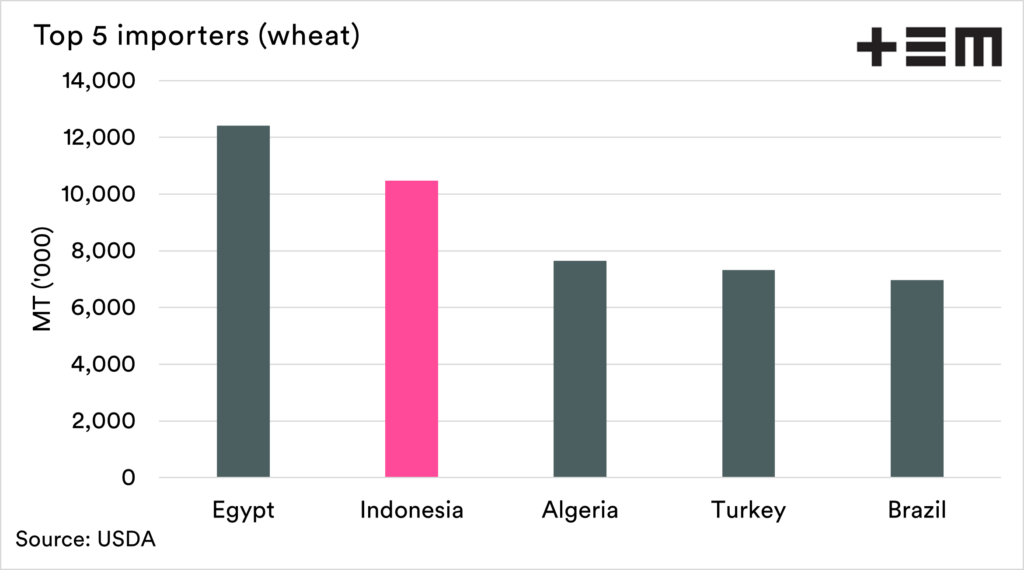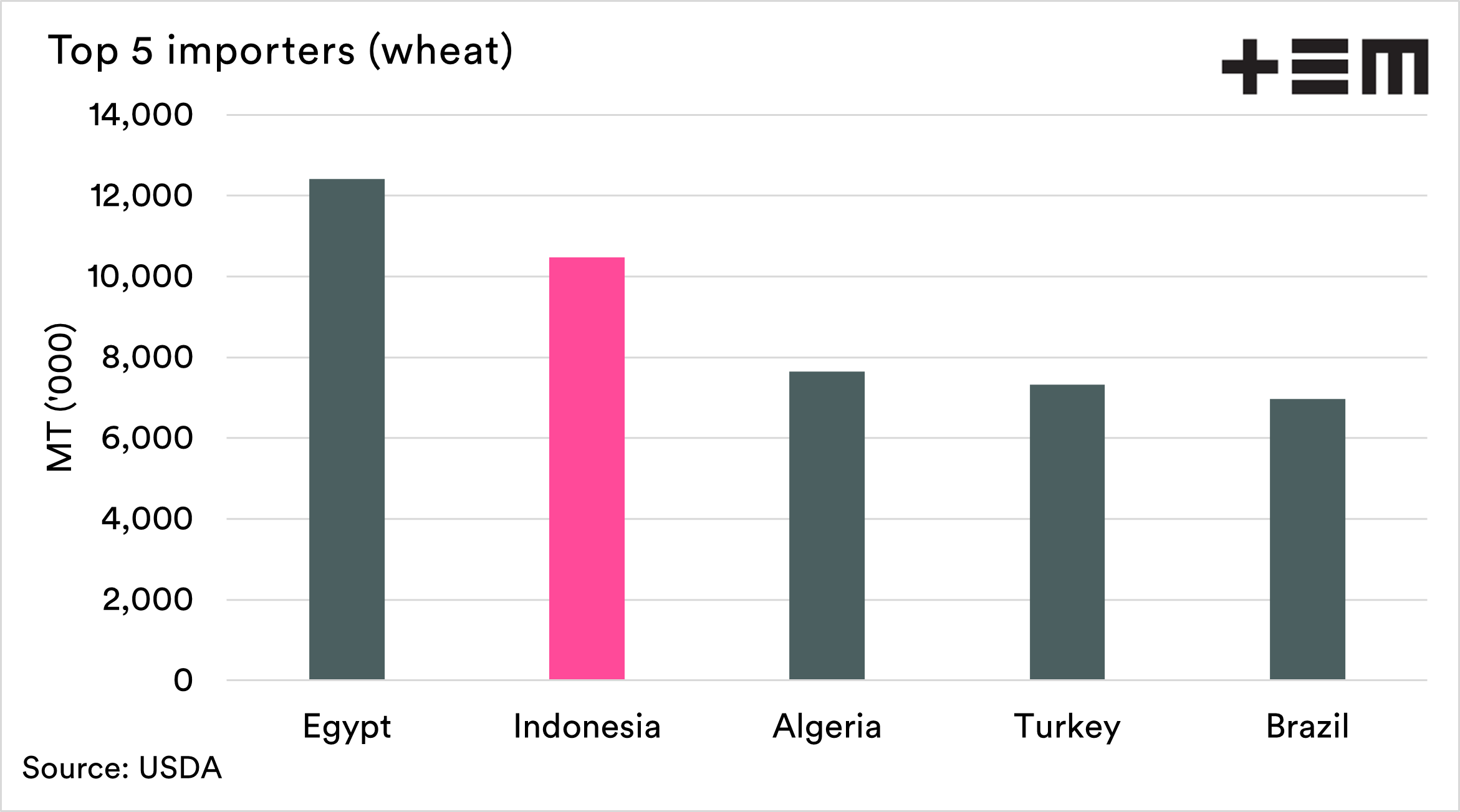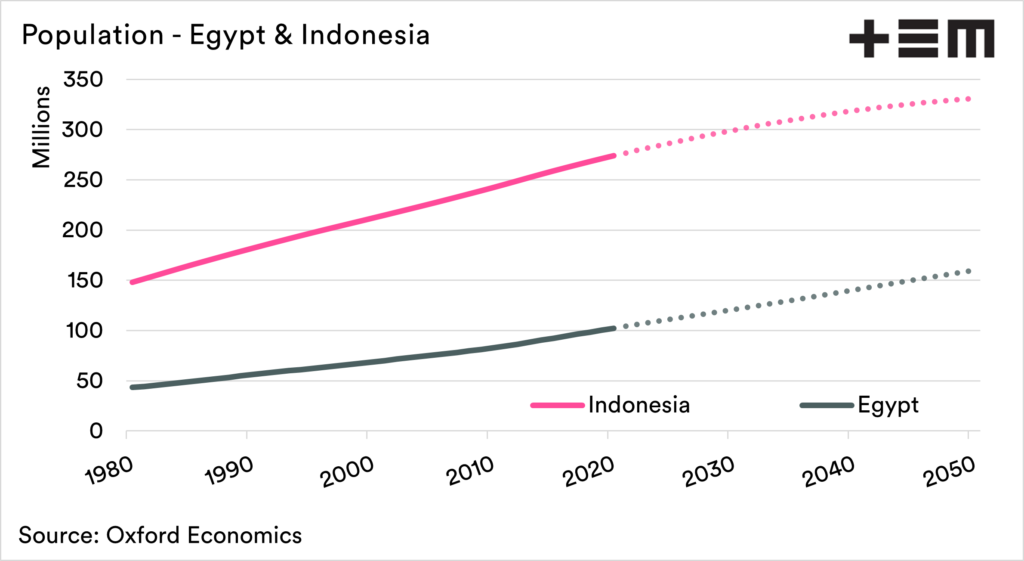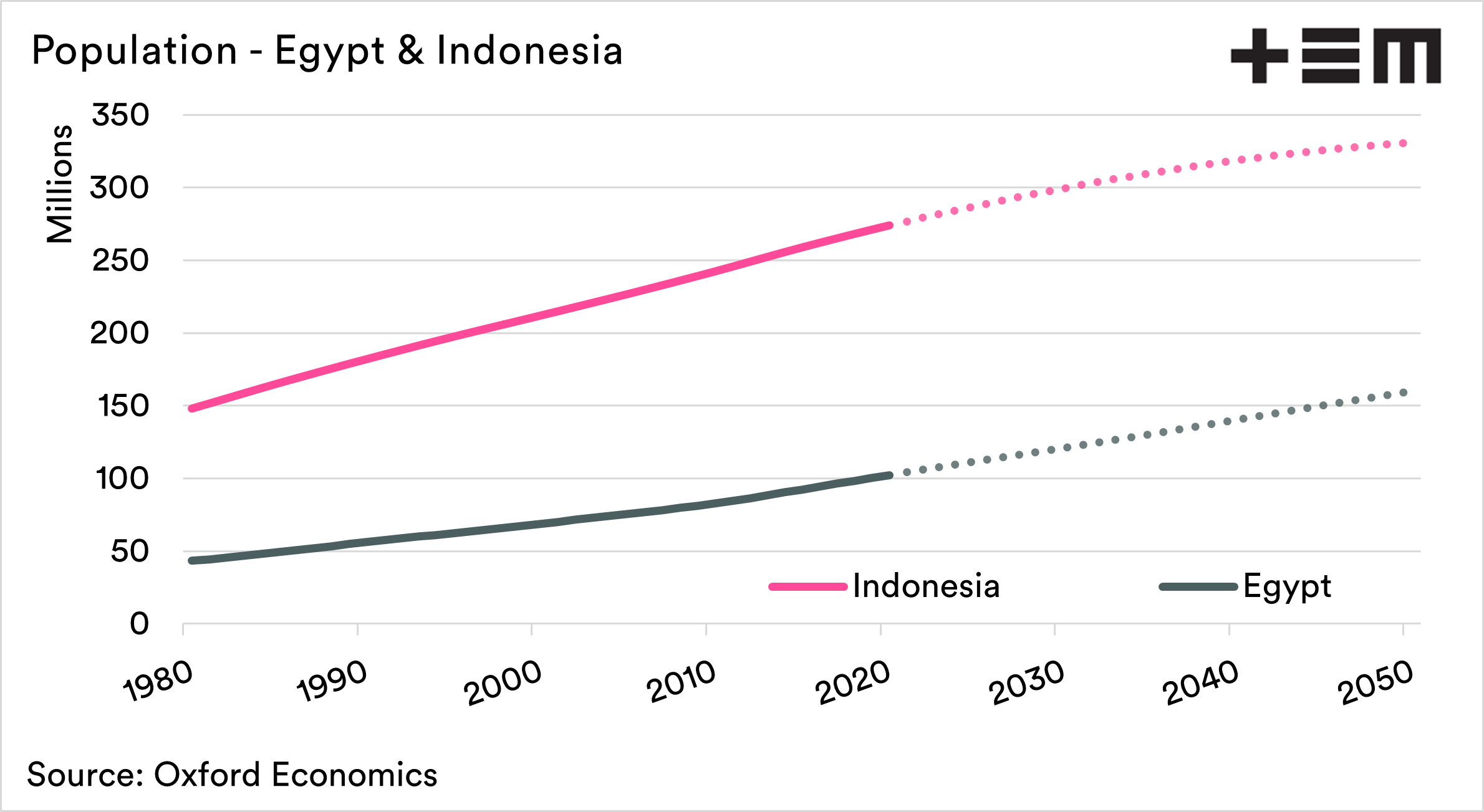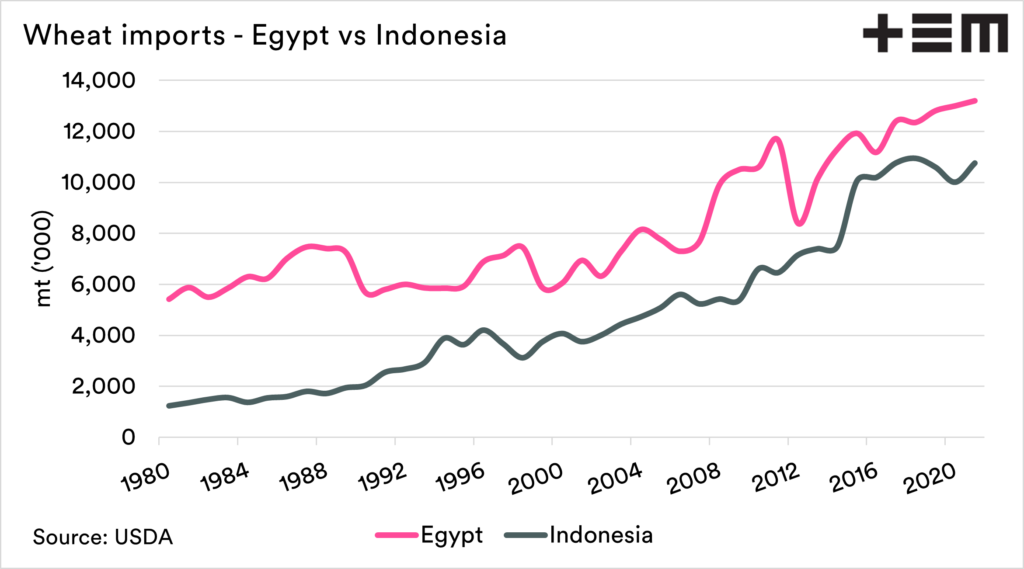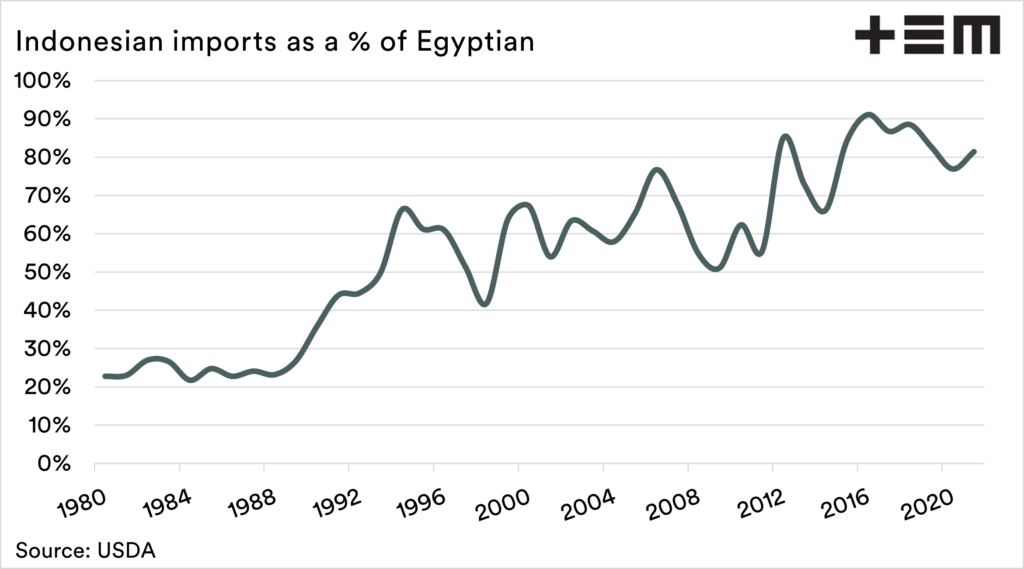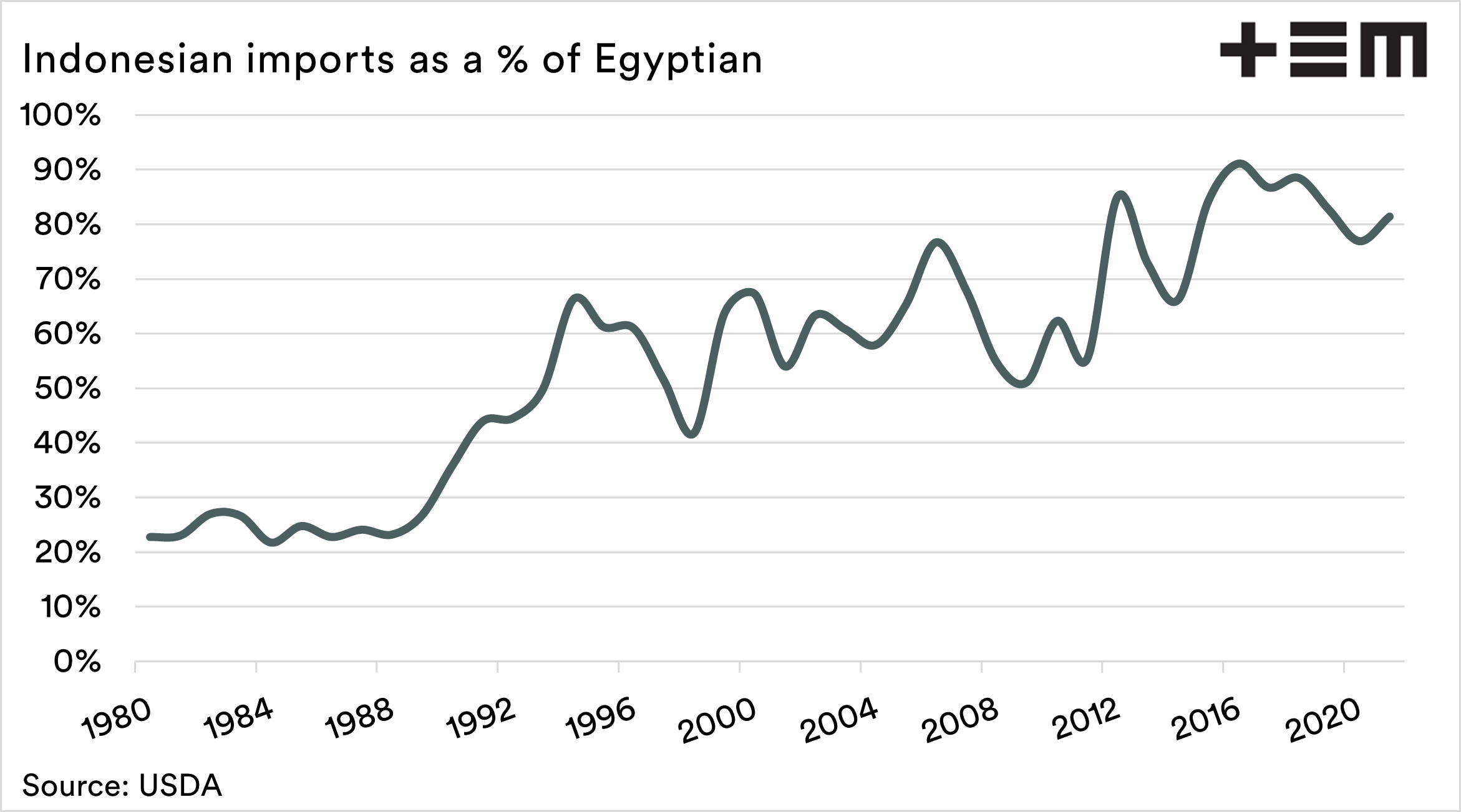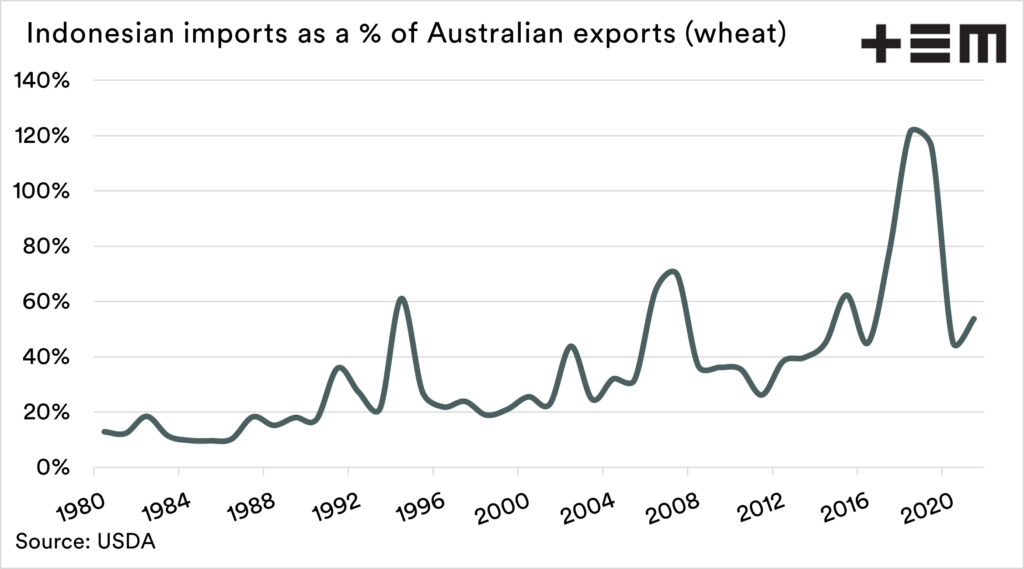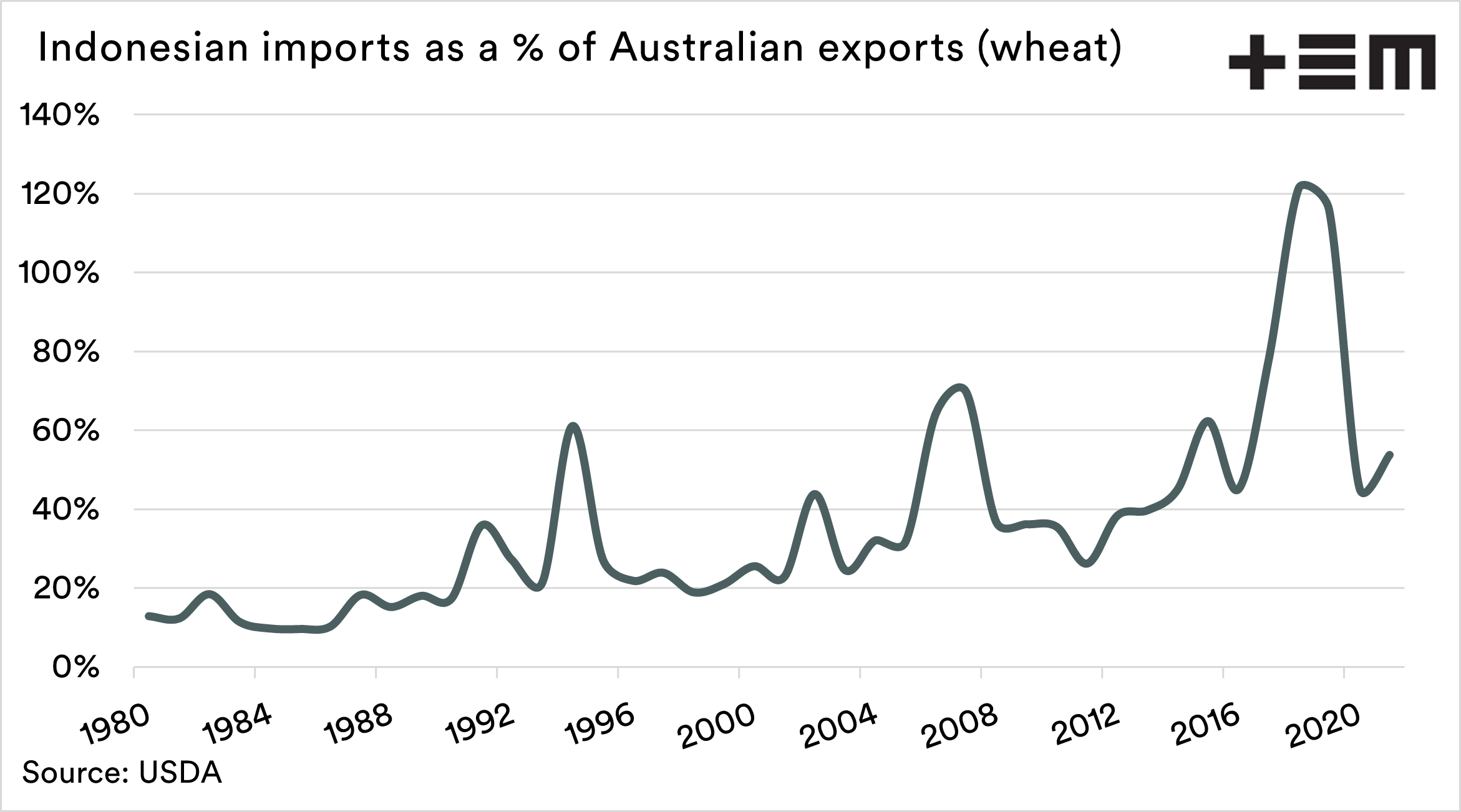The golden wheat treasure on our doorstep

The Snapshot
- Egypt is the worlds largest importer of wheat.
- Indonesia is closing the distance and could be in contention in the coming decades for the top spot.
- The population of Indonesia is at 274m and expected to rise to 330m by 2050.
- During the last half of the 2000s, Indonesia imported 5.6mmt of wheat on average per year.
- During the past five years, this has jumped to 10.5mmt.
- Indonesia, during the drought, imported more wheat than Australia’s exportable surplus.
- Australia has a free trade agreement with Indonesia assisting in removing the barriers of trade.
The Detail
In recent months I have been having informal chats with industry participants about the future of the wheat industry in Australia. It got me thinking about our customers and how we have a treasure on our doorstep.
The worlds largest importer of wheat for a long time has been Egypt. Egypt has been a big buyer in part due to the diet which is supported by heavily subsidised bread. The majority of the country is able to buy bread at subsidised rates.
The country also has an insufficient production capacity to meet the requirements of 100million people. The place of Egypt at the top of the wheat export tree might be in contention in the coming years, with our most populous neighbour, Indonesia, a potentially viable contender
There is often a concentration on talking about China, it’s an obvious huge market, and it tends to fill the headlines. Indonesia is, however, a huge opportunity for the Australian grain market (and livestock).
The population is forecast at approximately 274m people, more than ten times the population of Australia at25.6m.
It is expected that the population will grow to 330m by 2050. That is a huge number of mouths to feed, and it’s all right on our doorstep.
The growing population and the lack of local production have resulted in ever-growing imports. During the last half of the 2000s, Indonesia imported on average 5.6mmt. During the past five years, this has jumped to 10.5mmt.
This volume will continue rising for both food and for feed.
The rise has been dramatic and has seen Indonesian imports of wheat rise to an average of 85% of the volume which Egypt imports. Whilst Egypt is important, and their tenders are closely watched to drive global directions, Indonesia is a quiet performer.
This places neighbouring nation as a customer with the potential to soak up a large chunk of our exportable surplus. The below shows the theoretical % of our exports, which Indonesia could meet (our total exports vs their total imports).
Interestingly during the recent droughts, our total exports were lower than their total imports. This resulted in Indonesia importing larger volumes from our rivals.
Australia is lucky to be positioned so close to such a significant trading partner who will not have the capacity to grow its local production massively.
The work by industry groups like Grain Growers to support free trade agreements has enabled us to have very few barriers to trading with this future monster.

